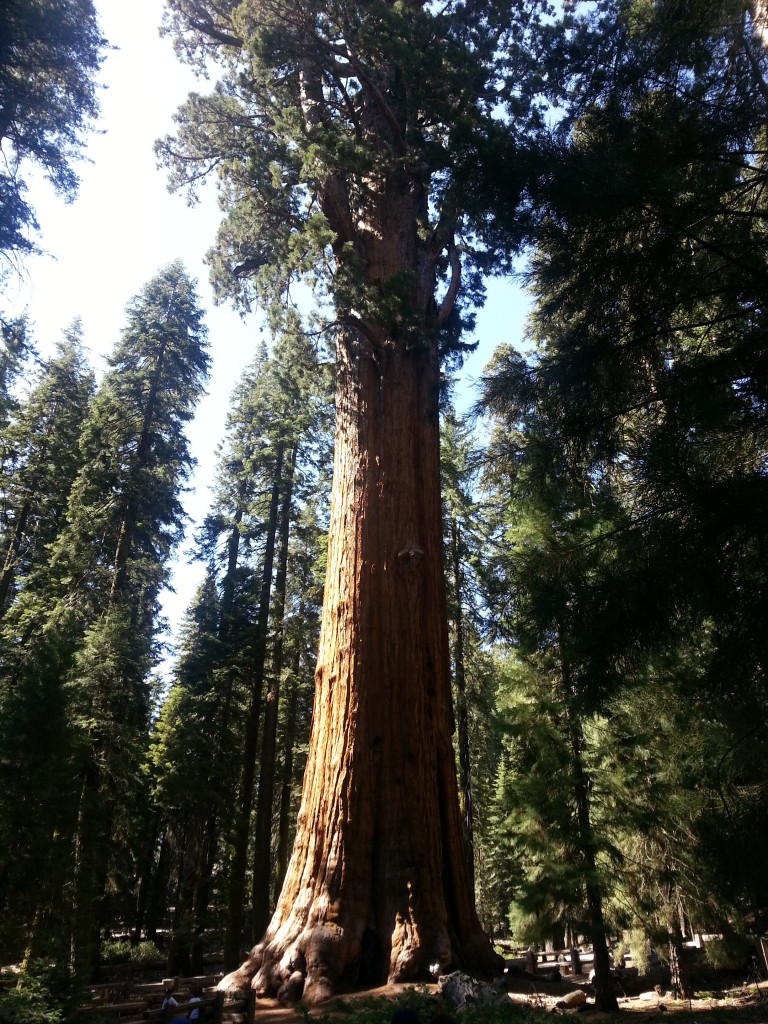 >> General Sherman Tree: The General Sherman tree is the most voluminous tree known on earth. It is incredible to stand next to such a huge living thing. Reaching the base of the popular tree is accessed via a short and somewhat steep decent from the upper parking area. On the trail down, there are educational placards and notes on how far up General Sherman you would be if you were climbing it. If someone in your party is not up for the path down or the hike back up to the car, there is a shuttle and some handicapped parking in a lower lot on General’s highway which is directly in front of the General Sherman tree.
>> General Sherman Tree: The General Sherman tree is the most voluminous tree known on earth. It is incredible to stand next to such a huge living thing. Reaching the base of the popular tree is accessed via a short and somewhat steep decent from the upper parking area. On the trail down, there are educational placards and notes on how far up General Sherman you would be if you were climbing it. If someone in your party is not up for the path down or the hike back up to the car, there is a shuttle and some handicapped parking in a lower lot on General’s highway which is directly in front of the General Sherman tree.
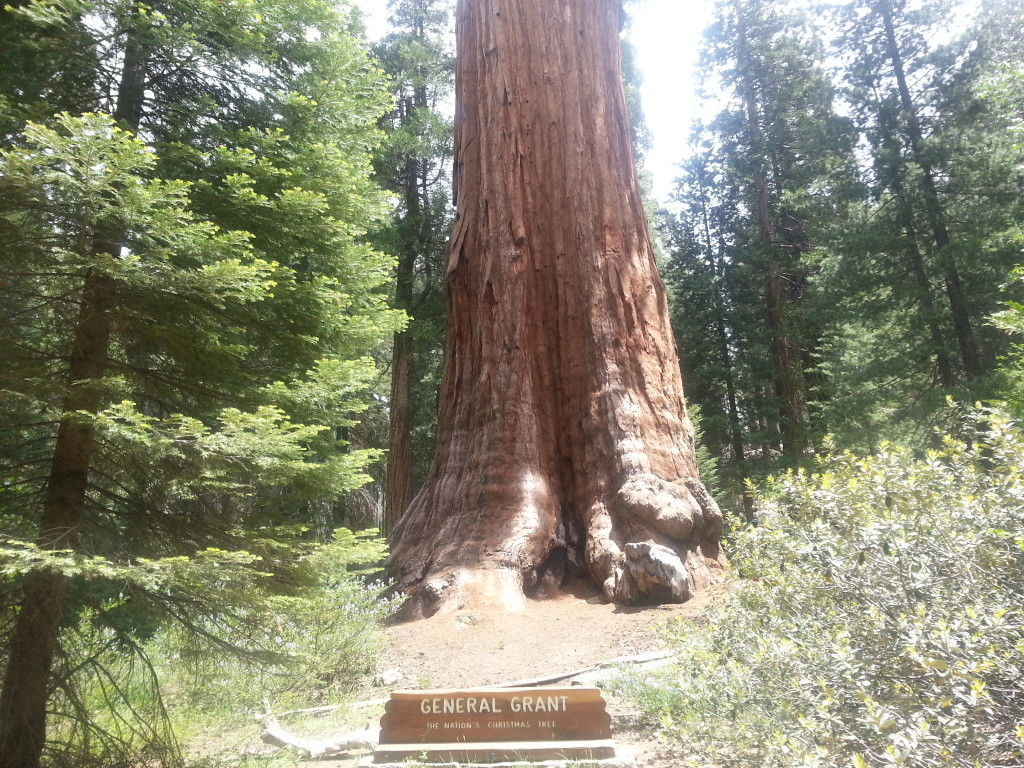
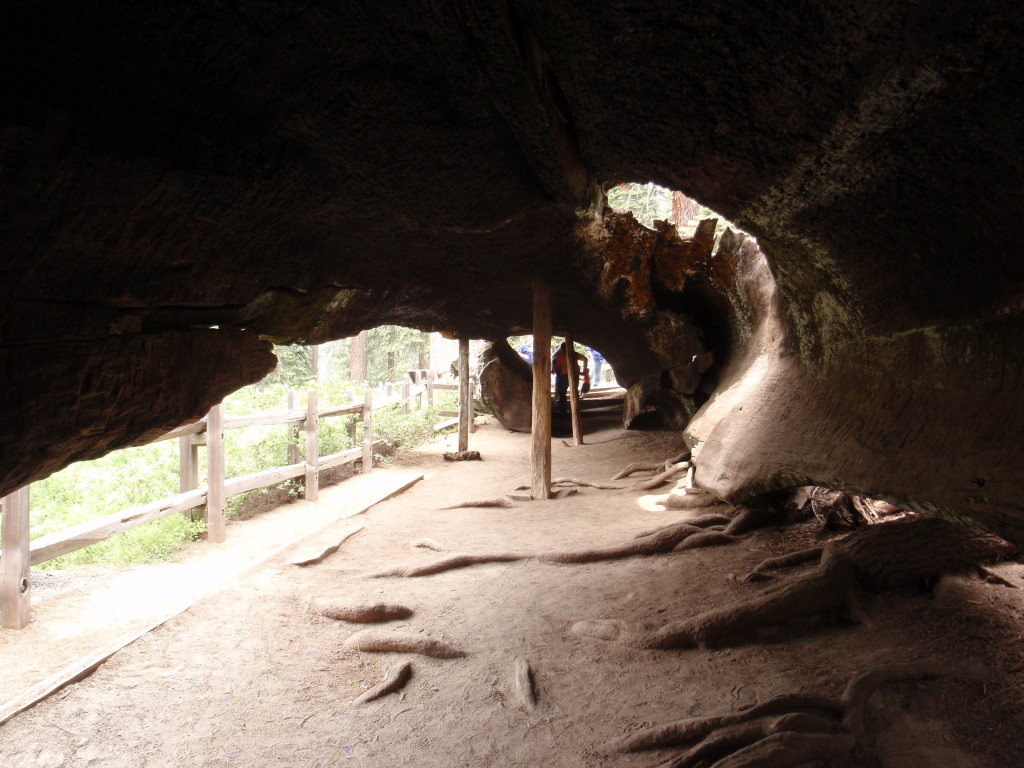
>> General Grant Grove: This grove provides several short loops and trails around the giant sequoias, and takes visitors to see the Fallen Monarch and the Gamlin cabin which sheltered earlier visitors. General Grant Tree is also located in the grove. It is definitely a HUGE reason to visit the grove as it is the third largest known tree in the world :). The General Grant Tree was also deemed “The Nation’s Christmas Tree” in 1926. Stop by and try to fit the base into a photo with you.
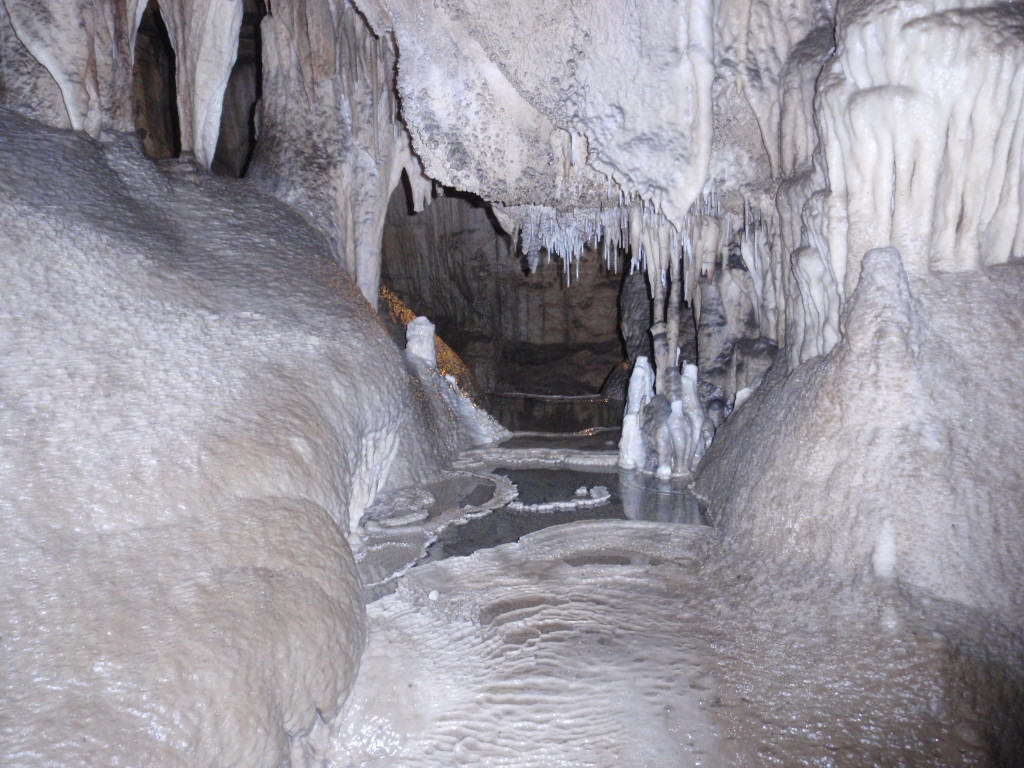
>> Crystal Cave: For a different kind of adventure in the park, grab your tickets ahead of time for a tour of Crystal Cave at the Foothills Visitor Center or Giant Forest Museum. Before entering through the iron spiderweb gate into the cave, you will drive away from the main tourist centers and then walk down a reasonably steep sometimes uneven 0.5 mile path to the entrance. Once inside, the tour is packed full of fascinating and other-worldly marble formations. It also allows visitors to experience complete darkness. Several different variations on the tour are offered to match your desired experience from a family friendly walking tour, to the adventure tour where you can don a helmet and crawl your belly through smaller cave spaces.
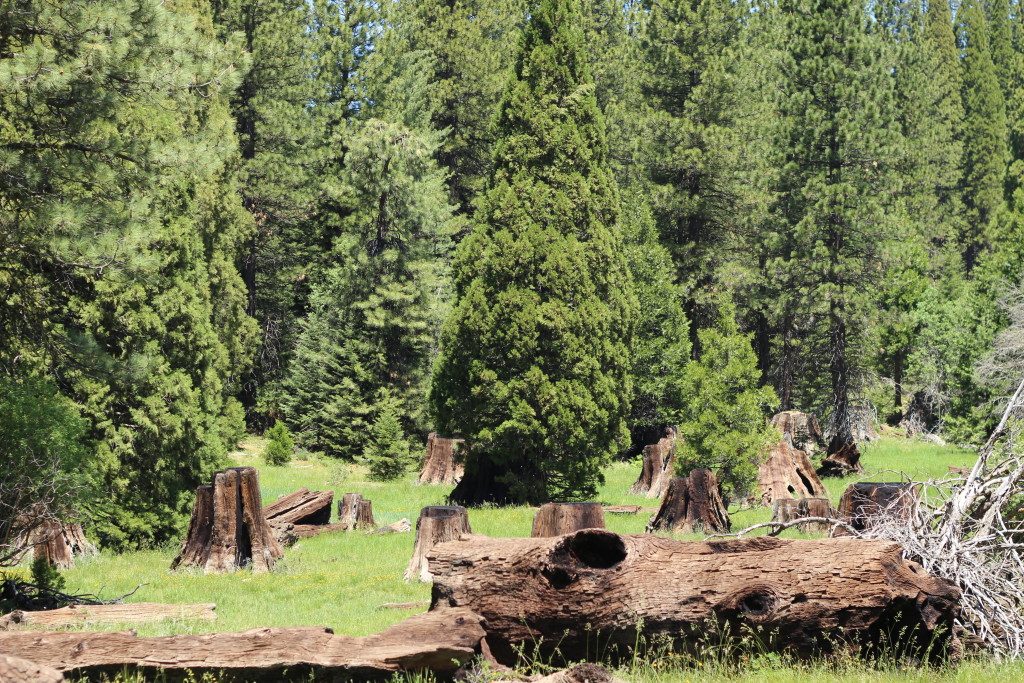
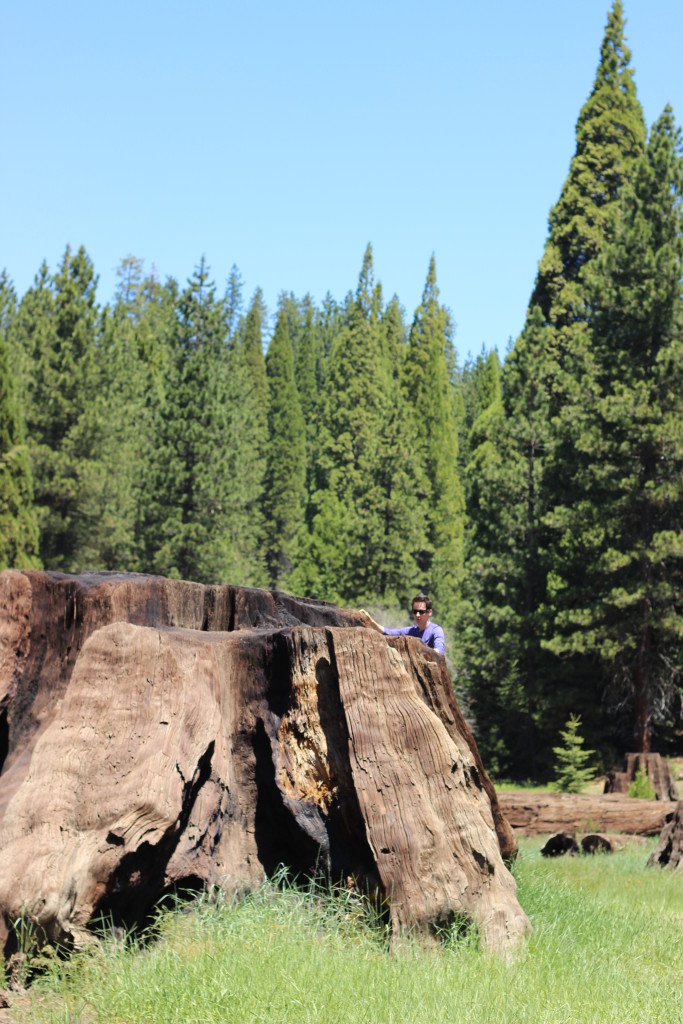
>> Sunken Meadow (Stump Meadow): Sunken meadow is a very different point of interest and probably my favorite on this list. When I first read about the meadow full of stumps, it sounded dead and depressing so I did not make it here the first time I visited. I’m very glad that we came the next year, however, because it is unlike anything else. The meadow is located within Converse Basin and we saw only one other person there. This may have been because the dirt road in is somewhat narrow, curvy, and full of potholes. We were fine without a 4-wheel drive but it should be navigated carefully. Practically all the trees in the miles of Converse Basin were logged in the 1800s. Much of this human damage is hidden now by new growth, but for some reason (potentially water table changes cause by the logging) Sunken/Stump meadow was not reclaimed. Despite being a still visible scar of our history, this meadow is beautiful. You are likely to have it all to yourself to climb enormous ancient stumps and take interesting photos.
My wishlist for future visits:

>> Moro Rock: For great views and a quick workout when the weather is nice. Moro Rock has a trail of stairs with railings cut into the rock. At the top of the climb the railings extend out to the rock’s peak where expansive (nearly 360) views of the park can be found. Do not hike on this exposed rock when lighting is a possibility, or if the granite trail is wet/snowy. I can’t wait to get back to the park and make time for this quick hike with a big reward.
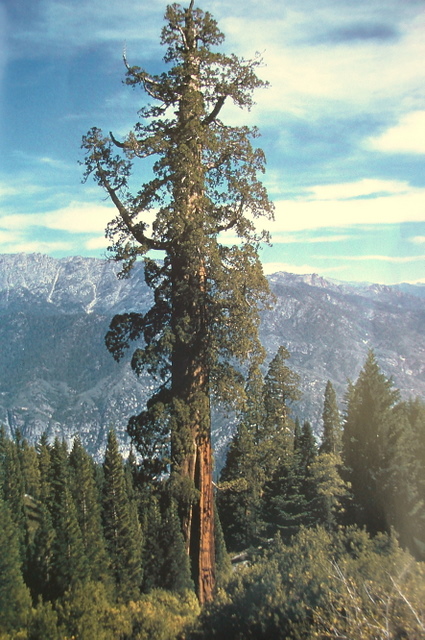
>> Boole Tree: On the road past Sunken/Stump Meadow you will reach a parking area and the 2.5 mile path to Boole Tree. Boole is one of the few giants that was so impressive that it was spared the logging fate of the rest of Converse Basin. I have not visited Boole Tree yet as we were running short on time and, as mentioned above in Stump Meadow, the road is not one you can rush. Being slightly more challenging to access, however, means that you could spend time taking in the majesty of this tree without the fences and crowds of the famous trees listed above.
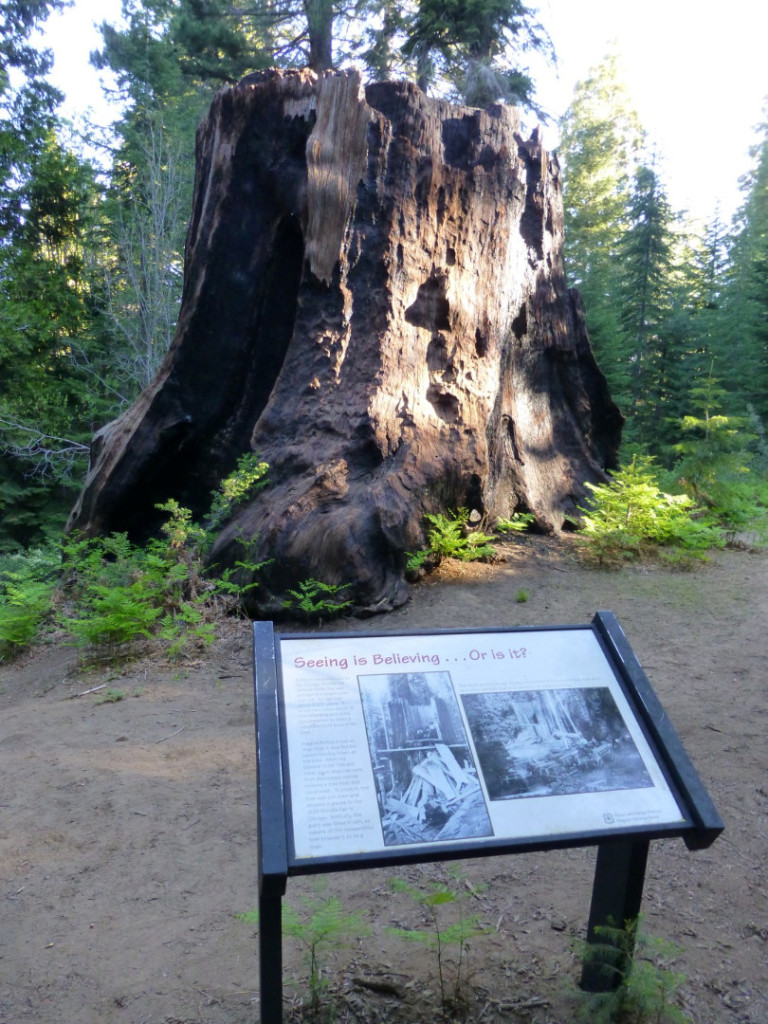
>> Chicago Stump: Another spot in Converse Basin that I haven’t made it to yet, the Chicago stump has an interesting history. The tree, which was once called the General Nobel Tree, was cut down in 1897. It was divided into sections and transported to the Chicago World’s Fair and reassembled so others could experience the giant sequoias without travel. Instead of being awed by these trees, however, many believed that it was all fake and took to calling the exhibit the “California Hoax”. If you want to check out the stump behind this story, the trail is just half a mile. We almost visited. The road for Cherry Gap/Chicago Stump that we turned onto was narrow and very uneven dirt; after a few hundred bumpy feet we encountered a large truck and decided it would be easiest to back out the gate again and let them pass. The woman driving the truck said that the road condition did not really improve further on. She felt we’d be okay in our (not rugged) car but it was not ideal. It was summer and the road was dry but we still decided to continue up Hwy 180 and visit Sunken Meadow instead.
